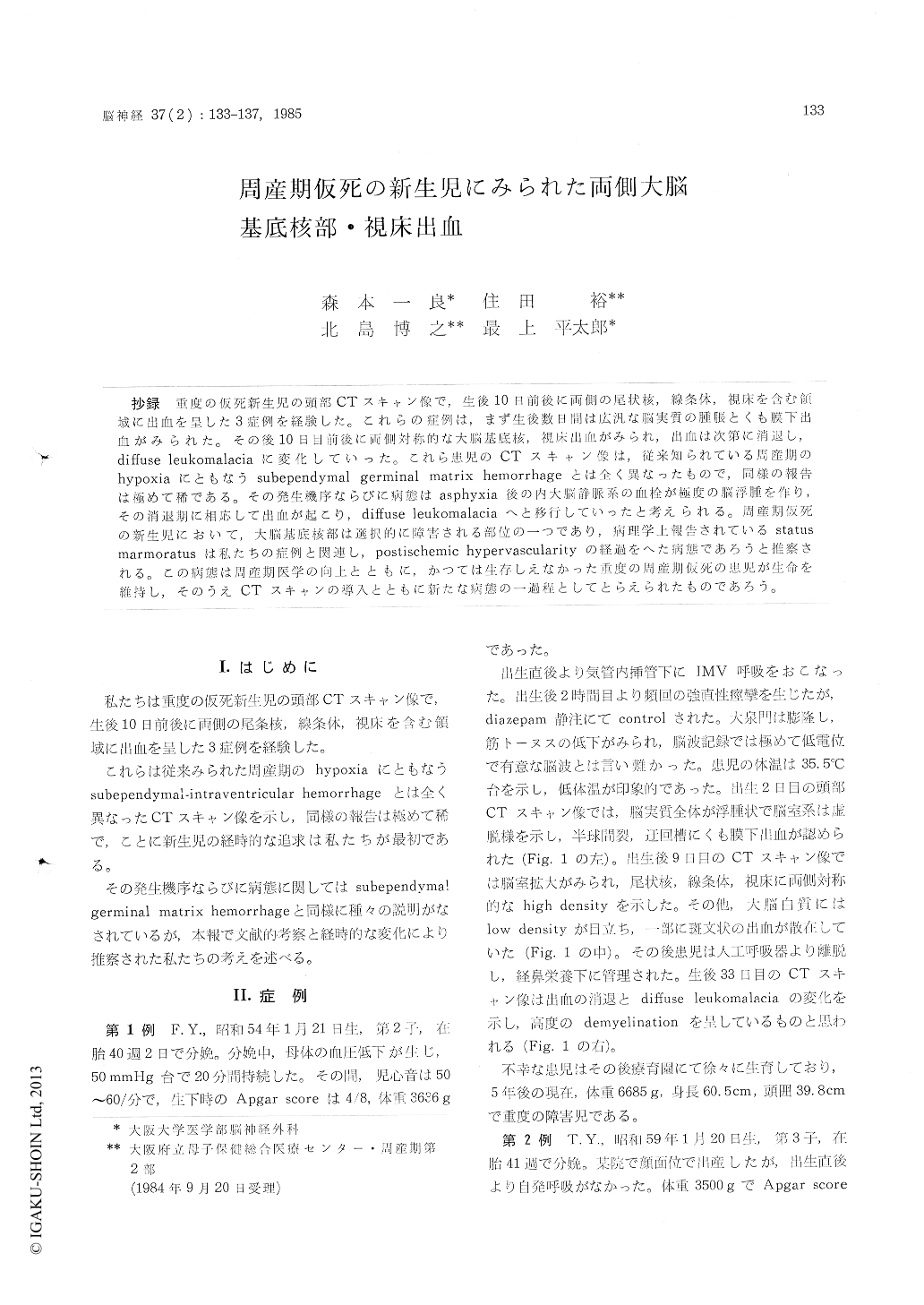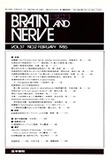Japanese
English
- 有料閲覧
- Abstract 文献概要
- 1ページ目 Look Inside
抄録 重度の仮死新生児の頭部CTスキャン像で,生後10日前後に両側の尾状核,線条体,視床を含む領域に出血を竪した3症例を経験した。これらの症例は,まず生後数日間は広汎な脳実質の腫脹とくも膜下出血がみられた。その後10日目前後に両側対称的な大脳基底核,視床出血がみられ,出血は次第に消退し,diffuse leukomalaciaに変化していった。これら患児のCTスキャン像は,従来知られている周産期のhypoxiaにともなうsubependymal germinal matrix hemorrhageとは全く異なったもので,同様の報告は極めて稀である。その発生機序ならびに病態はasphyxia後の内大脳静脈系の血栓が極度の脳浮腫を作り,その消退期に相応して出血が起こり,diffuse leukomalaciaへと移行していったと考えられる。周産期仮死の新生児において,大脳基底核部は選択的に障害される部位の一つであり,病理学上報告されているstatus marmoratusは私たちの症例と関連し,postischemic hypervascularityの経過をへた病態であろうと推察される。この病態は周産期医学の向上とともに,かつては生存しえなかった重度の周産期仮死の患児が生命を維持し,そのうえCTスキャンの導入とともに新たな病態の一過程としてとらえられたものであろう。
With the advancement of perinatal intensive care, the occurence of subependymal germinal matrix hemorrhage (=GMH) in low-birth-weight (premature) infants has became a major concern in perinatal medicine. The pathophysiology of the GMH has long been controversial. The intro-duction of computed tomographic (=CT) scanning to perinatal medicine has revealed various patho-logical events heretofore unknown in newborn infants having respiratory and circulatory distress. At our serving the entire Osaka Prefecture, infants suffering from birth asphyxia with severe peri-natal brain damage were found to have CT findings distinguishable from those of GMH.
We report three asphyxiated newborn infant who had hemorrhagic infarction in bilateral caudate nucleus, striatum and thalamus on the CT scan. Reports of similar findings are rare, and ours is the first serial observation of such CT scan image in newborn infants. The mechanism of development and pathology of this pathological condition have been variously argued as patho-physiology of GMH. The present study lacks postmortem examination, however, the findings in serial CT scans in three infants and review of the literatures related to the pathology of neonatal asphyxia indicate the following course. The throm-bosis in the internal cerebral veins led to severe swelling of the brain, and hemorrhage occurred with the reduction in the swelling, eventually resulting in diffuse leukomalacia. Etat marbre (status marmoratus), mentioned earlier, is con-sidered to represent a milder stage of thispathologic course. The inference, drawn from serial CT scan findings, that neonatal asphyxia produce severe circulatory disturbance in the basal ganglia and thalamus as selective vulnerable site and undergo to hemorrhagic infarction around 10 days of ages. The newly described pathophysiologicalevent was clinically encountered because of both event of CT scan and the progress in perinatal intensive care which has enable infants with severe birth asphyxia to survive.

Copyright © 1985, Igaku-Shoin Ltd. All rights reserved.


